
The 17th of December, ALBA organized together with FCT Portugal an online workshop with approximately 100 participants. ALBA presented the Portuguese community of synchrotron users the features and status of the facility. In addition, it also promoted the interaction between Portuguese, Spanish research groups and ALBA scientists to start developing collaborations. In 2021, ALBA will host four postdoctoral positions within this Iberian collaboration which will be based at ALBA premises.
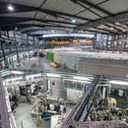
A UOC team has carried out the first parameterization of a millimetre-band signal propagation model applied to an industrial environment like the ALBA Synchrotron facility. It is the first step towards high performance wireless communications in the manufacturing industry.
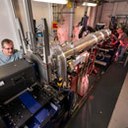
Small and medium companies (SMEs) can ask for funded beamtime in different European light sources thanks to EU CALIPSOplus project till the 30th of June 2021.

The Rector Council of the ALBA Synchrotron, counting with the participation of the Ministry of Science and Innovation and the Department of Business and Knowledge of the Generalitat de Cataluña, chaired by Minister Pedro Duque, has given the green light to start working in 2021 on the ALBA II project, an ambitious program that will transform ALBA into a 4th generation synchrotron facility upgrading the accelerator and other components and building new beamlines.
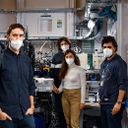
Plastic solar cells are comprised of two materials: a semiconductor polymer and another electron-accepting compound. To obtain the maximum performance from the solar cell, it is necessary that regions where the compounds are intermixed and regions where the materials are pure coexist. This new research presents for the first time an experimental methodology based on nanocalorimetry that allows quantifying the degree of intermixing of solar cells, a fundamental knowledge for the design of more efficient and stable devices. Some of the experiments were carried out in the ALBA Synchrotron's NCD-SWEET beamline.
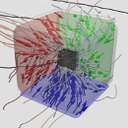
A group of scientists from the University of Oviedo and ALBA has been able to identify and measure for the first time the magnitudes of topological charges inside a thin ferromagnetic film, the most commonly used morphology in nanomagnetic devices. To achieve this result, the 3D magnetization inside the film was determined with magnetic tomography at MISTRAL beamline at ALBA.

The Board of the Analytical Research Infrastructures in Europe (ARIE) wish to raise attention to the funding needs of Research Infrastructures (RIs) in the next Horizon Europe (HE) program, and appeal for a reassignment of part of the funds to programs dedicated to Research Infrastructures.
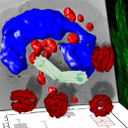
The new study, published in Science Advances, identifies the role of the CCT protein, a cytosolic chaperonin, in the reorganization of the cellular skeleton involved in the immune synapse. This interaction process between lymphocytes and antigen-presenting cells is necessary for the activation of lymphocytes and determines the immune response intensity. The inner changes of the cells have been imaged thanks to the MISTRAL beamline of the ALBA Synchrotron.
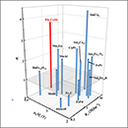
A new highly-anisotropic Rh-based Heusler compound has been reported as an ideal candidate for high-density magnetic recording media through fast heat-assisted writing technology. The BOREAS beamline (ALBA Synchrotron) helped to characterize this new material probing the origin of its giant magneto-crystalline anisotropy.
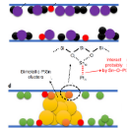
A research team has developed a synthesis procedure to modulate the exact interaction between platinum (Pt) and tin (Sn) in subnanometric Pt clusters confined in MFI (Mobil-type five) zeolite to achieve optimal catalytic performances. The catalyst showed an initial propane conversion of ~20% and after 70 h the propane conversion decreased very slowly to ~17%, demonstrating the outstanding performance of this new catalyst. In-situ X-ray absorption spectroscopy (XAS) experiments were performed in the CLÆSS beamline at the ALBA Synchrotron.

For the first time, an international team of scientists recreated in the lab the molecule that allows the tsetse fly to feed on blood. It’s a powerful yet small anticoagulant with a unique and strong binding to thrombin, the key enzyme of the coagulation pathway. X-ray diffraction measurements at two synchrotron facilities ––ALBA and ESRF–– were instrumental to understand the structure and the mechanism of action of this molecule, which suggests it is also a promising platform for designing improved anticoagulant drugs.

More than 170 participants from all Europe met up virtually for the third League of European Accelerator-based Photon Sources (LEAPS) Plenary meeting. The event has been hosted by the ALBA Synchrotron, whose director, Caterina Biscari, will continue as Chair of LEAPS in 2021.

Discover our services for SMEs! Remember that till 21st December 2020, small and medium companies can ask for funded beamtime in different European light sources thanks to EU CALIPSOplus project
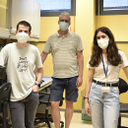
A study led by scientists from the XALOC beamline of the ALBA Synchrotron reports an in-depth structural analysis of bacterial proteins involved in conjugation: Rap and Rco, at various levels of atomic detail. They have demonstrated that Rap tetramerization is induced by peptide binding, through a novel “foot-2-foot” interaction, not previously seen in other proteins of the Rap family. Tetramerization hampers Rap-Rco interaction, releasing Rco, which is a repressor protein, and thereby blocking conjugation, the transfer of genetic material between bacteria.

LEAPS invited to a Zoom webinar on 28 October 2020, 10–12 CET "European Research Infrastructures: Engines for Science and Innovation" hosted by MEP and vice-chair of the ITRE Committee at the European Parliament, Lina Gálvez.

Pottery glazes and decorations from Montelupo dated from the 14th-19th centuries have been analyzed through a series of X-ray micro-diffraction measurements with synchrotron light at MSPD beamline of the ALBA Synchrotron. Researchers from Institut Català d’Arqueologia Clàssica and the Universitat Autònoma de Barcelona carried out the experiments, which will provide useful information to reconstruct the technological processes used for manufacturing the ceramics.

The Catalan Minister Ramon Tremosa has visited the ALBA Synchrotron’s facilities accompanied by its Director, Caterina Biscari, and by other members of the management, as well as by other researchers working in the facility. Later, the Catalan Minister had a meeting at the ALBA auditorium with the directors of several research centers of the area, where he has announced the intention of the Catalan Government to create a public-private investment fund to promote the knowledge transfer of the Catalan research.
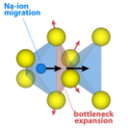
An international research team has described the effects of pressure on the structure and ionic conductivity of Na3PS4 solid electrolyte. Researchers used several techniques and carried out unique variable-pressure impedance spectroscopy experiments to investigate the response of ionic conduction to applied pressure. The results of this study are of high interest in the field of solid-state batteries as a next-generation technology for large-scale electrochemical energy storage to enable electric vehicles and renewable electricity production. Some of the measurements were done at the MSPD beamline in the ALBA Synchrotron.
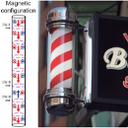
A new study fruit of a collaboration between Spanish research institutions shows that cylindrical nanowires have at the center a magnetization aligned with the axis of the wire and at the surface a magnetization that describes helical lines as the barber poles. The helicity provides chirality to the magnetic configuration, and they found out that two adjacent magnetic domains having opposite chirality are more difficult to move that two adjacent domains with the same chirality. This result evidences the role of the chirality on the dynamics of the domain walls that might be used as a practical variable for magnetic data storage.
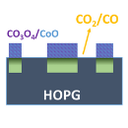
An international research team has demonstrated the oxidation effect of HOPG at room temperature by the deposition of an ultra-thin layer of cobalt monoxide (CoO). The formation of carbon defects reveals a weakening of the C-C sigma bonds, facilitating the carbon gasification reaction catalyzed by CoO at lower temperatures than using typical metallic nanoparticles. This fact opens the door to a more comprehensible and efficient graphite and graphene nanopatterning for multiple applications. The results were obtained using in-situ NAP-XPS measurements at the NAPP endstation of the CIRCE beamline in the ALBA Synchrotron.
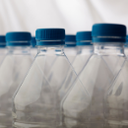
French researchers jointly published an article that made the cover of the scientific journal Nature: engineered PET-depolymerase to break down and recycle plastic bottles. The development of this novel enzyme places this technology at the forefront of efforts to better protect our oceans and planet against plastic pollution. Some of the experiments were carried out at the XALOC beamline in the ALBA Synchrotron.
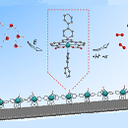
A new oligomeric, hybrid molecular material behaves as a rugged and powerful molecular electro-anode for the water oxidation reaction achieving unprecedented current densities in the whole range of pH, but especially at neutral pH. The catalyst is adsorbed to the graphitic surface via a novel aromatic C-H-π interactions – an anchoring strategy that has never been described for molecular catalysts up to now and that can be extended to other catalytic reactions. The study, led by researchers from the Institute of Chemical Research of Catalonia with the collaboration of NCD-SWEET beamline scientists, has been published in Nature Chemistry.

The Director of ALBA has been Chair of LEAPS during 2020 and she will continue in 2021 working with renewed enthusiasm for the League of European Accelerator based-Photon Sources.

In early testing, NVMesh speeds access to beamline microscopy data on GPU servers, bringing greater storage efficiency, agility, and ROI.

The report shows the outcomes of a pilot exercise, carried out by the Centre for Industrial Studies (CSIL) and the ALBA Synchrotron, to describe and trace the innovation impacts arising from experiments carried out at ALBA as well as the pathways according to which these impacts materialise. The results of this research have already been published and can be found by clicking in the following link.
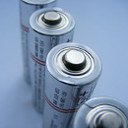
A study published in the journal of Energy and Environmental Science has combined experimental and theoretical approaches to study the passivation layers formed on calcium metal electrodes and their influence on the reversible operation of calcium-based batteries. The work is led by researchers from ICMAB-CSIC, who have performed experiments at MIRAS beamline of ALBA in collaboration with MIRAS scientists through an in-house research program, representing the applications of its synchrotron light technique in the field of batteries and energy science.
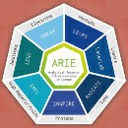
After the joint position paper published as a pre-release in July, in which the Analytical Research Infrastructures of Europe (ARIE) presented their plan to tackle HE Missions, the ARIE enhanced its cross-border, multidisciplinary collaboration to offer Europe a strong and valid weapon against the present COVID-19 challenge and other potential viral and microbial threats.
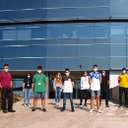
Eleven dual training students from Catalan schools have joined our facility to learn a job while carrying out their training.
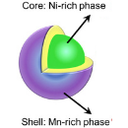
An international research group has developed a universal and facile synthetic strategy to synthesize a LiNixCoyMn1-x-yO2 (NCM) material for the lithium-ion batteries. The study provides new insights into the synergistic effect of core and shell during electrochemical cycling. These findings provide a new perspective for rational design of layered nickel-based cathode materials with high energy and long cycling life with particular two-phase electrochemical characteristics. Some of the data were obtained at the MSPD and CLAESS beamlines in the ALBA Synchrotron.

Primary school teachers can sign up their groups of 10-12 years old children for the third edition of Mision ALBA at www.misionalba.es. After the great success of the past editions with more than 300 teachers and 10,000 students from all over the country registered, this school-year 500 available places are offered for this educational project launched by the ALBA Synchrotron. This edition opens with the novelty of 4 new experiments about the light and its properties.
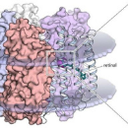
An international research team has obtained for the first time the structure of the light-sensitive sodium-pumping KR2 protein in its active state. The discovery provides a description of the mechanism behind the light-driven sodium ion transfer across the cell membrane. Understanding how KR2 works is crucial for optimizing the functional characteristics of that protein and using it as the basis for new optogenetic tools.

Till 21st December 2020, small and medium companies can ask for funded beamtime in different European light sources thanks to EU CALIPSOplus project.
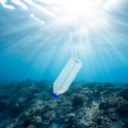
Researchers from Spain’s Autonomous University of Madrid (UAM), University of Alcalá (UAH), the Spanish Institute of Oceanography (IEO) and the ALBA Synchrotron have demonstrated for the first time the presence of microplastic in a freshwater lake in the Arctic. So far, these kind of contaminants had only been registered in marine ecosystems of the arctic region.

The Digital Object Identifier, or DOI, is a persistent link, and specifically, it is an identifier allowing data to the traced from production to publication.
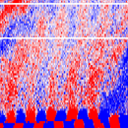
An international team of researchers have studied the mechanism by which surface acoustic waves (SAW) enhance catalytic activity. They were able for the first time to measure the effect of SAW on the electronic structure of a Pt model catalyst and achieved a remarkable precision with the new experimental setup at the CIRCE beamline in the ALBA Synchrotron.
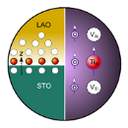
An international team of researchers has discovered that the B-site cation stoichiometry is crucial for the creation and control of the magnetism at the interface between ABO3-perovskite oxides. The findings present a new perspective for the understanding of interfacial magnetism, with potential applications in spin-based energy such as low-energy consumption electronics. Some experiments were performed at the BOREAS beamline in the ALBA Synchrotron.
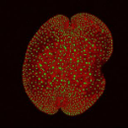
In a new study, researchers from the Netherlands and colleagues in Japan and Spain have found a simple mechanism for control of plant growth. Implementation of these findings can help growers to design new crops with for example resistance against disease, drought or flood. Some of the experiments were performed at the XALOC beamline in the ALBA Synchrotron
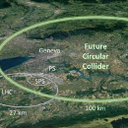
Researchers of the Superconducting Materials and Large Scale Nanostructures (SUMAN) group at the ICMAB, the ALBA Synchrotron, the Universitat Politècnica de Catalunya (UPC) and CERN, study the surface resistance and vortex properties of seven superconducting coated conductors at microwave frequencies, high magnetic fields and low temperatures (mimicking the expected conditions of the Future Circular Collider at CERN) to study how they respond.

They want to analyze the biochemical properties of this biomaterial, and its possible use to absorb and immobilize heavy metals from contaminated water. This is the first time that IRTA (Institute of Agrifood Research and Technology) and the ALBA Synchrotron stablish a scientific collaboration.
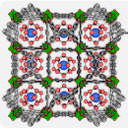
The system is based on a metal-organic framework material and offers an alternative for natural gas transport and natural gas-powered vehicles, like private cars, buses and ships. Some of the experiments were performed at the MSPD beamline of the ALBA Synchrotron.
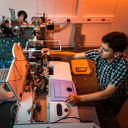
A study published in the Journal of Physical Chemistry C shows for the first time the combination of two synchrotron light techniques to study the high-pressure behavior of an iodate: X-ray powder diffraction and FTIR microspectroscopy. This is the first experiment performed at MIRAS in extreme conditions using the Far-infrared frequency range, illustrating the synergy of infrared microspectroscopy with other available techniques at ALBA, in particular at MSPD beamline, as a complementary analytical method.
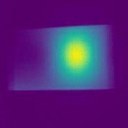
LOREA beamline has seen its first photons. The photograph, taken in the control hutch of the beamline, shows in the computer screens the footprint of the very first photon beam on the fluorescence screen located outside the optical hutch, taken with only 2 mA of electron beam in the storage ring. Although masked, the satisfaction expressed by the three beamline scientists Massimo Tallarida (beamline responsible), Federico Bisti and Debora Pierucci is evident. This is an important milestone for the beamline, reached with very demanding operating conditions due to the pandemic situation. Congratulations to everybody that contributed to this result!
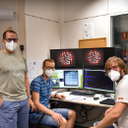
A research team from Centro de Investigaciones Biológicas Margarita Salas (CIB-CSIC) uses synchrotron light to study the possible effect of an antitumoral drug of clinical use over the viral cycle of SARS-CoV-2 coronavirus. The drug might interrupt the viral transport inside the cell, blocking its replication. The experiment was performed at the NCD-SWEET beamline of the ALBA Synchrotron.
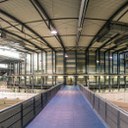
Call for proposals for 2021-I cycle is now open till 7th September. This call covers experiments from January 2021 to June 2021, except for BL13-XALOC Beamline which will cover all the year.
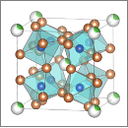
A research lead by the Instituto de Ciencia de Materiales de Madrid (CSIC), using high-angular resolution synchrotron X-ray diffraction at the MSPD beamline of ALBA Synchrotron, allows understanding a great deal of physical properties in relationship with the thermoelectric performance of different prepared skutterudites, promising thermoelectric materials which can convert heat to electricity and vice versa. The synchrotron data was essential to investigate the structural details of the new skutterudite-type compounds.
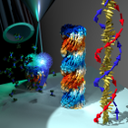
A study published in ACS Nano demonstrated the imprinting of complex 3D chirality at the nanoscale using state-of-the-art fabrication techniques and magnetic microscopy at MISTRAL beamline of the ALBA Synchrotron. The results prove the possible control of the magnetic configuration with geometrical morphologies displaying 3D chirality and open a new avenue on applied nanomagnetism. The research was the result of a multiple collaboration of scientists from Cambridge, Glasgow and Zaragoza Universities, the ALBA Synchrotron and the Lawrence Berkeley Laboratory.

‘Learning to run again’ – a webinar with 120 participants discussed the challenges for synchrotrons and FELs to restore effective operations during the COVID-19 pandemic. The plenary session had representatives from the Paul Scherrer Institute, from ALBA and from the ESRF, all of which were at different stages of operation. ALBA also actively participated in the safety and remote access sessions.

ALBA resumes all on-site activities and the whole staff is allowed coming to the facility. Particular attention is devoted to safety guidelines and precautionary measures against COVID-19 risk are defined and mandatory. They are based on the official ones from the government and adapted to ALBA’s reality, strengthening the risk mitigation. Teleworking is allowed, as well as justified flexibility working hours.
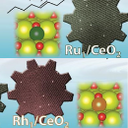
An international research team from Germany and Spain has shown that the combination of ruthenium (Ru) and rhodium (Rh) single-atom catalysts stabilized at the surface of cerium dioxide (CeO2) creates a synergetic effect enabling a highly selective olefin isomerization-hydrosilylation tandem reaction. The process is highly relevant from an industrial point of view considering that complex mixtures of olefins are used as starting materials for plastics, alongside a straightforward catalyst recycling and reuse.
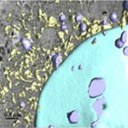
A study led by researchers at Institut d'Investigació i Innovació Parc Taulí in Sabadell (Barcelona), in close collaboration with the ALBA Synchrotron, has demonstrated that the use of tricine as an adjuvant for cisplatin chemotherapy enhances drug effectiveness against cutaneous squamous cell carcinoma. This study published in PLOS ONE assesses the effectiveness of several treatments by looking at the changes in the internal structures of the cells using the MISTRAL beamline of ALBA.




